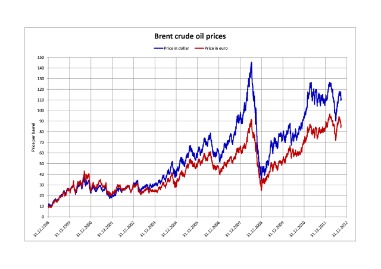A Comprehensive Guide on How to Use the Descending Triangle in Trading Market Pulse
Online Betting & Casino Video Games In India ᐉ Login At 1 Wi
24/06/2023Ideal Dating Sites just for 2023
27/06/2023
A notable technical analysis pattern that denotes a negative market is the falling triangle. A Descending Triangle is a bearish chart pattern, commonly found either at the top of a trend as a reversal pattern or mid-trend as a continuation pattern. In technical analysis, the measuring technique helps traders estimate the next price movement based on previous trading activity. In other words, if you know how to correctly use this technique, you’ll be able to predict the length of the next trend. The resulting decline after the second short entry moved fast, as one would expect after a descending triangle pattern ends.
A profit target can be estimated based on the height of the triangle added or subtracted from the breakout price. If the triangle is $5 high, add $5 to the upside breakout point to get the price target. If the price breaks lower, the profit target is the breakout point less $5. The first step in trading this strategy is to pick a stock that has been in a downtrend or in a consolidation phase. The time frame of the chart is irrelevant as you can use this strategy across any time period.
Descending Triangle: What It Is, What It Indicates, Examples
The duration of the pattern can range from a few weeks to many months, and the volume usually contracts as the pattern develops. Last but not least, it’s important to note that a descending triangle carries a distinct bearish bias, unlike the symmetrical triangle, which remains neutral until the breakout. This bias is highlighted by the pattern’s lower highs, which reflect increasing selling pressure. In short, the descending triangle is an easily recognized pattern that can provide you with valuable insights into an asset’s forthcoming price movements. After recording a lower high just below 60 in Dec-99, Nucor formed a descending triangle early in 2000. In late April, the stock broke support with a gap down, sharp break, and increase in volume to complete the formation.
A regular descending triangle pattern is commonly considered a bearish chart pattern with an established downtrend. It can be applied to the pattern to determine likely take profit targets. For this pattern, traders can measure the distance from the beginning of the pattern, at the highest point of the descending triangle to the flat support line.
Swing Trading Signals
Most traders would likely combine information gleaned from a descending triangle pattern with other analysis tools. However, at times – as we’ll explain later – descending triangles can express a bullish signal in the form of a reversal pattern. Our first trade example shows a descending triangle pattern that was clearly visible on the four-hour timeframe. All the conditions that we discussed before showed up during the formation of the pattern and preceded a strong breakout. Following the chart example above, we will now look at how traders typically trade the descending triangle pattern.
Examining The Potential Support And Resistance Levels Of Fantom – Blockzeit
Examining The Potential Support And Resistance Levels Of Fantom.
Posted: Fri, 08 Sep 2023 12:00:23 GMT [source]
Let’s examine each individual part of the pattern and then look at an example. A bearish configuration that appears in both uptrends and downtrends is a descending or falling triangle. Thus, if it appears during an uptrend or a downtrend, it denotes a trend reversal, respectively. Once you have identified this chart pattern in the stocks, you can trade accordingly as discussed above.
How to time your entry and set your stop loss
Descending triangles are a bearish pattern that anticipates a downward trend breakout. A breakout occurs when the price of an asset moves above a resistance area, or below a support area. Technical traders have the opportunity to make substantial profits over a brief period. They often watch for a move below the lower support trend line, suggesting that downward momentum is building and a breakdown is imminent. Traders often enter into short positions to further lower the asset’s price. The ascending triangle is formed in an uptrend and indicates a continuation of the uptrend.

After the breakout, wait for the price to retest the broken lower trendline as a new resistance level. False breakouts are situations where the price appears to break out from the pattern but then swiftly reverses direction. It’s crucial to wait for confirmation before executing trades based on a perceived breakout. While identified primarily as a bearish chart pattern, there is roughly a 50/50 chance of a break down versus an upward breakout, making it more neutral than bearish.
Characteristics of a Descending Triangle
As a continuation chart pattern, it helps you find a price signal where you can enter a position and make profits. As the descending triangle forecasts a potential bearish breakout, traders will look for an opportunity to sell once price breaks below the horizontal support line. Once a breakout does occur, a short entry can be taken with a stop loss above the final lower high before the breakout occurred.
- After you get a bullish EMA signal and a breakout, it is an ideal signal to trade.
- A triangle is a type of consolidation, and therefore volume tends to contract during an ascending triangle.
- This sharp move is accompanied by heavy volume and marks the beginning of an aggressive move within the current trend.
- The duration of the pattern can range from a few weeks to many months, and the volume usually contracts as the pattern develops.
- Once the pattern has been identified, the next step is to wait for the bullish trend to pick up.
- Profit objectives can be set based on the pattern’s height, anticipating the price will travel a similar distance post-breakdown.
In the next section of this article, we illustrate five descending triangle trading strategies that can be used. The general view is that the more volume there is on down days, the more bearish is the market sentiment. The next step is to wait for the breakout below the lower line of the triangle, which confirms that the market is headed downwards. Beginner traders might seek professional guidance https://g-markets.net/ when learning to identify and trade based on the Descending Triangle, as incorrect identification can lead to significant losses. Consider purchasing put options on the underlying asset after the breakout, providing a way to profit from the anticipated downward move while limiting risk to the premium paid. Place a stop-loss order above the breakout point to protect against false breakouts.
The breakout after a pennant pattern should occur at or near the point where the trendlines converge, called the apex. When dealing with a symmetrical triangle, however, it is optimal for price to break above or below the trendlines one-half to three-quarters of the way through the pattern. This means the pattern often never reaches its apex, forming a flat-topped cone rather than an actual triangle. A breakout is eventually forced one way or the other as price nears the apex.
Along those lines, the moving average indicators serve the purpose of triggering the signal to initiate a trade. In this strategy, traders simply need to what is a descending triangle wait for the descending triangle pattern to be formed. Once the pattern has been identified, the next step is to wait for the bullish trend to pick up.
How to Trade a Descending Triangle Pattern?
Even though you may find statistics about the profitability and hit ratio of patterns like the descending triangle, they should be taken with a big grain of salt. The reason is that there are so many variables that go into identifying these somewhat arbitrary patterns, which means that the result you get will vary a lot depending on the definition. You’ll find that many people refer to triangle patterns and pennants interchangeably. It gets especially hard to identify the difference when the length of the pattern resides around the 1-week mark, which is generally when a pennant turns into more of a triangle. In conclusion, the main factors that make the descending triangle a bearish pattern could be said to be the long term falling trend, in combination with the lower highs.
The descending triangle appears as the forex candlesticks start to consolidate. The measuring technique can be applied once the triangle forms as traders anticipate the breakout. These two types of triangles are both continuation patterns, except they have a different look. The descending triangle has a horizontal lower line, while the upper trendline is descending. This is the opposite of the ascending triangle, which has a rising lower trendline and a horizontal upper trendline. For trading purposes, an entry is typically taken when the price breaks out.
